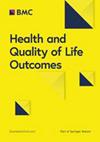在衡量孕期干预措施的益处时,如何纳入孕产妇和胎儿的结果?成本效益分析的系统性审查结果
IF 3.2
2区 医学
Q1 HEALTH CARE SCIENCES & SERVICES
引用次数: 0
摘要
孕期医疗干预会影响孕妇和胎儿的寿命和生活质量。本系统性综述旨在确定和描述妊娠干预成本效用分析结果测量的理论框架。我们在儿科经济数据库评估(PEDE)数据库(截至 2017 年)以及 Medline、Embase 和 EconLit(2017-2019 年)中进行了检索。我们纳入了所有以英文发表的孕期干预措施的成本效用分析。我们对以下内容进行了叙述性综述:研究设计;结果构建(预期寿命、质量调整、贴现率);以及增量成本效益比(ICER)是使用母体还是胎儿结果构建的。在同时包含两种结果的情况下,我们还提取了合并两种结果的方法。我们确定了 127 项妊娠成本效用分析,其中 89 项报告了 QALY,38 项报告了 DALY。59项研究(47%)只考虑了胎儿的结果,13项研究(10%)只考虑了孕妇的结果,49项研究(39%)同时考虑了两者的结果。在特定的临床领域中,纳入或排除一组或两组结果的选择并不一致。在同时纳入母亲和婴儿结果的情况下,合并这些结果的方法也各不相同。有 29 项研究将母体和胎儿的 QALYs/DALYs 相加,未作任何调整。其余 20 项研究采用了各种不同的方法,旨在对母体和胎儿的结果进行不同的权衡。这些方法包括:(1)将胎儿结局视为孕产妇生活质量的一个组成部分,而不是(或除了)独立的个体健康结局;(2)将孕产妇-胎儿组合视为一个单一实体,并对每种结局组合应用单一效用值;以及(3)为胎儿结局分配较短的时间跨度,以降低胎儿终生结局的权重。每种方法都对孕产妇和胎儿健康结果的相对价值做出了不同的假设,表明缺乏一致性,需要指导。在妊娠成本效用分析中,获取 QALY/DALY 结果的方法差别很大。这种缺乏一致性的情况表明,需要新的方法来支持对孕产妇和胎儿健康结果的估值。本文章由计算机程序翻译,如有差异,请以英文原文为准。
How are maternal and fetal outcomes incorporated when measuring benefits of interventions in pregnancy? Findings from a systematic review of cost-utility analyses
Medical interventions used in pregnancy can affect the length and quality of life of both the pregnant person and fetus. The aim of this systematic review was to identify and describe the theoretical frameworks that underpin outcome measurement in cost-utility analyses of pregnancy interventions. Searches were conducted in the Paediatric Economic Database Evaluation (PEDE) database (up to 2017), as well as Medline, Embase and EconLit (2017–2019). We included all cost-utility analyses of any intervention given during pregnancy, published in English. We conducted a narrative synthesis of: study design; outcome construction (life expectancy, quality adjustment, discount rate); and whether the Incremental Cost-Effectiveness Ratio (ICER) was constructed using maternal or fetal outcomes. Where both outcomes were included, methods for combining them were extracted. We identified 127 cost-utility analyses in pregnancy, of which 89 reported QALYs and 38 DALYs. Outcomes were considered solely for the fetus in 59 studies (47%), solely for the pregnant person in 13 studies (10%), and for both in 49 studies (39%). The choice to include or exclude one or both sets of outcomes was not consistent within particular clinical areas. Where outcomes for both mother and baby were included, methods for combining these outcomes varied. Twenty-nine studies summed QALYs/DALYs for maternal and fetal outcomes, with no adjustment. The remaining 20 took a variety of approaches designed to weigh maternal and fetal outcomes differently. These include (1) treating fetal outcomes as a component of maternal quality of life, rather than (or in addition to) an independent individual health outcome; (2) treating the maternal-fetal dyad as a single entity and applying a single utility value to each combination of outcomes; and (3) assigning a shorter time horizon to fetal outcomes to reduce the weight of lifetime fetal outcomes. Each approach made different assumptions about the relative value of maternal and fetal health outcomes, demonstrating a lack of consistency and the need for guidance. Methods for capturing QALY/DALY outcomes in cost-utility analysis in pregnancy vary widely. This lack of consistency indicates a need for new methods to support the valuation of maternal and fetal health outcomes.
求助全文
通过发布文献求助,成功后即可免费获取论文全文。
去求助
来源期刊
CiteScore
7.30
自引率
2.80%
发文量
154
审稿时长
3-8 weeks
期刊介绍:
Health and Quality of Life Outcomes is an open access, peer-reviewed, journal offering high quality articles, rapid publication and wide diffusion in the public domain.
Health and Quality of Life Outcomes considers original manuscripts on the Health-Related Quality of Life (HRQOL) assessment for evaluation of medical and psychosocial interventions. It also considers approaches and studies on psychometric properties of HRQOL and patient reported outcome measures, including cultural validation of instruments if they provide information about the impact of interventions. The journal publishes study protocols and reviews summarising the present state of knowledge concerning a particular aspect of HRQOL and patient reported outcome measures. Reviews should generally follow systematic review methodology. Comments on articles and letters to the editor are welcome.

 求助内容:
求助内容: 应助结果提醒方式:
应助结果提醒方式:


